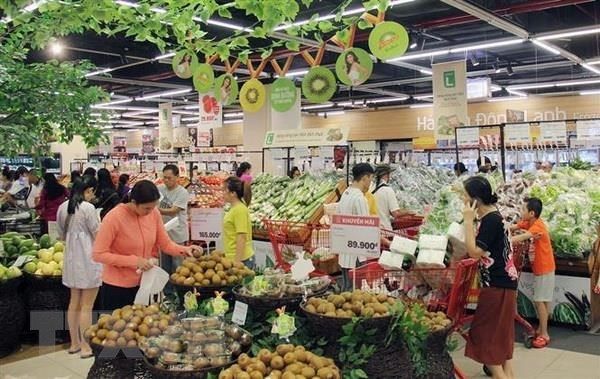 |
|
After recording itsslowest pace in more than three year last month, Vietnam’s inflation is forecast to hit only 2.7 percent in 2019 after standing at 3.5 percent last year
|
HSBCanalysts made the forecast in the 'Vietnam at a glance' report released thisweek.
Vietnam’sheadline inflation last month moderated to 2.2 percent year-on-year, from 2.9 percentin May. This marks not only the lowest year-on-year inflation growth since2019, but the slowest pace in more than three years.
Pricesfell 0.1 percent month-on-month, reversing the incremental increases over thepast two consecutive months. The main drag came from lower transport prices,falling 1.7 percent month-on-month, primarily due to declining global oilprices.
Meanwhile,housing and construction materials prices fell 0.2 percent month-on-month andfood costs remained steady at 0.1 percent. In addition, healthcare priceswere unchanged over the past half a year.
Typically,the Government adjusts healthcare costs every six months, which means an upwardadjustment to healthcare costs could happen in July or August. In addition,given how well inflation has been contained, there could be more room for theGovernment to continue healthcare reforms.
Overall, Vietnam’sinflation has remained subdued with inflation growing at 2.6 percentyear-on-year on average in the first six-month period. Although higher globalfood prices stemming from El Nino and recent retail electricity price hikescould pose upside risks, they are unlikely to pose imminent threats to theState Bank of Vietnam (SBV)’s inflation target of below 4 percent.
Givenbenign inflationary pressures and solid economic growth, HSBC predicted the SBVwill keep monetary policy on hold in 2019.
HSBC alsonoted during what has been a bumpy 2019, Vietnam has managed to weather risksto grow relatively well.
At firstglance, some headline numbers may not look rosy compared to previous quarters,HSBC said, citing Vietnam’s GDP in the second quarter gradually slowed to 6.6 percentyear-on-year, due to slower growth in the manufacturing sector of 9.4 percent,while manufacturing's contribution to GDP fell below 2 percentage points forthe first time in two years, dragging down economic growth slightly.
However,they said, Vietnam’s performance is not as bad as it looks in the broadercontext of a cooling tech cycle and subdued global demand.
Exportsrebounded strongly to 9.5 percent year-on-year from the 13-quarter low of 5.1 percentin the first quarter.
ThePurchasing Manufacturing Index (PMI) accelerated to 52.5 in June, ending thesecond quarter with a stronger reading than the first quarter.
But it’snot only manufacturing. Services, another pillar of growth, continued to expandsteadily, at 6.9 percent year-on-year in the second quarter, thanks in part toflourishing tourism.
Unsurprisingly tourism-relatedindustries, such as retail sales, transportation and accommodationservices, continued to grow steadily, contributing to a more diversified growthoutlook. Viet Nam welcomed a record high 15.6 million tourists in 2018, and bymid-2019, tourist arrivals are growing 7.5 percent year-on-year.
The trend islikely to continue in the second half of 2019, especially as the northern hemisphereenters winter season.-VNS
 After recording its slowest pace in more than three year last month, Vietnam’s inflation is forecast to hit only 2.7 percent in 2019 after standing at 3.5 percent last year.
After recording its slowest pace in more than three year last month, Vietnam’s inflation is forecast to hit only 2.7 percent in 2019 after standing at 3.5 percent last year.